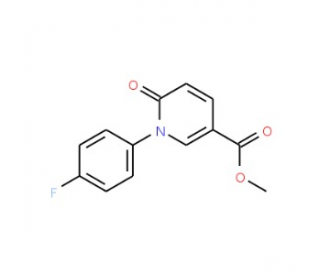详细说明
- Purity>90%, by SDS-PAGE under reducing conditions and visualized by silver stain
- Endotoxin Level<1.0 EU per 1 μg of the protein by the LAL method.
- ActivityMeasured by its ability to liberate oligosaccharides from heparin. The specific activity is >12,000 pmol/min/μg, as measured under the described conditions. See Activity Assay Protocol on .
- SourceE. coli-derived Met1-Arg376, with Met, 6-His tag and a fusion partner at the N-terminus
- Accession #
- N-terminal Sequence
AnalysisMet - Predicted Molecular Mass55 kDa
- SDS-PAGE59 kDa, reducing conditions
| 5830-GH | | |
| Formulation Supplied as a 0.2 μm filtered solution in Tris, NaCl and Citrate. | ||
| Shipping The product is shipped with dry ice or equivalent. Upon receipt, store it immediately at the temperature recommended below. | ||
| Stability & Storage: Use a manual defrost freezer and avoid repeated freeze-thaw cycles.
|
- Assay Buffer: 50 mM Tris, 300 mM NaCl, 2 mM CaCl2, pH 7.5
- Recombinant B. thetaiotaomicron Heparinase I (rBtHeparinase I) (Catalog # 5830-GH)
- Substrate: Heparin (Tocris, Catalog # ), prepare a stock solution in deionized water
- 96 well clear UV-transparent microplate (Corning, Catalog # 3635)
- Plate Reader (Model: SpectraMax Plus by Molecular Devices) or equivalent
- Dilute rBtHeparinase I to 1 ng/µL in Assay Buffer.
- Dilute Substrate to 0.75 mg/mL in Assay Buffer.
- Load into plate 100 µL of 1 ng/µL rBtHeparinase I, and start the reaction by adding 200 µL of 0.75 mg/mL Substrate. Include a Substrate Blank containing 100 µL of Assay Buffer and 200 µL of 0.75 mg/mL Substrate.
- Read in kinetic mode for 5 minutes at an absorbance of 232 nm.
- Calculate specific activity:
| Specific Activity (pmoles/min/µg) = | Adjusted Vmax* (OD/min) x well volume (L) x 1012 pmol/M |
| ext. coeff** (M-1cm-1) x path corr.*** (cm) x amount of enzyme (µg) |
*Adjusted for Substrate Blank
**Using the extinction coefficient 3800 M -1cm -1
***Using the path correction 0.92 cm
Note: the output of many spectrophotometers is in mOD Per Well:
- rBtHeparinase I: 0.1 µg
- Substrate: 0.5 mg/mL
Heparin and heparan sulfate are sulfated glycosaminoglycans that share basic carbohydrate backbone structure with alternating uronic acid and N-acetylglucosamine residues (1, 2). Heparin is found in mast cells and has strong anticoagulation properties. Heparan sulfate is found on cell membrane and extracellular matrix and is involved in various biological events from cell growth, adhesion and migration to lipid metabolism. Heparin has a much higher degree of sulfation than heparan sulfate, which can be considered as a polysaccharide with regions similar to heparin interspaced with much less sulfated regions. Both heparin and heparan sulfate can be digested by heparinases, a group of bacterial lyases that are widely used as tools for processing and analyze these polysaccharides. Heparinase I from Bacteroides thetaiotaomicron (3) is a newly discovered heparinase with no activity against chondroitin sulfate and keratan sulfate (4). The enzyme readily releases tri‑sulfated and di-sulfated disaccharides from heparin and heparan sulfate.
- References:
- MacArthur, J. M. et al. (2007) J. Clin. Invest. 117:153.
- Esko, J. D. and Selleck, S. B. (2002) Annu. Rev. Biochem. 71:435.
- Xu, J. et al. (2003) Science 299:2074.
- Luo, Y. et al. (2007) Arch. Biochem. Biophys. 460:17.
- Entrez Gene IDs:1073402 (B. thetaiotaomicron)
- Alternate Names:Heparinase I












